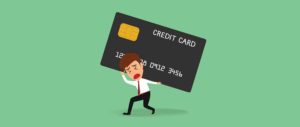Every year PDSA vets see hundreds of pets that have been involved in horrific road traffic accidents – and the darker evenings in winter can bring added danger.
The PDSA says the risks can be significantly reduced if owners take some simple but effective precautions.
PDSA Vet Nurse, Nina Downing, says: “The simplest step you can take is to keep your dog under close control and on a short lead whilst walking when it’s getting dark. Even if your dog is really well behaved and always comes when they’re called, it only takes a moment’s distraction for an accident to happen.
“A good quality lead, attached to your dog’s collar, harness, or both, will mean you can keep your dog close to your side while you’re walking next to busy roads. Extender leads can actually be more dangerous – they don’t give you the control you need if your dog suddenly dashes off.”
Nina’s other top tips include:
●
Teach your dog road awareness. If your dog knows a few simple commands – like ‘sit’ and ‘stay’ – you can help them learn some road sense which will help to keep them safe. Teaching them a command like ‘wait’ or ‘stop’ could help to put your dog’s brakes on in an emergency. ‘Come away’ or ‘come here’ will then bring your dog away from danger.
●
For effective training it’s important to use positive, reward-based training. As you walk towards the curb, keep them on a close lead and ask your dog to ‘sit’ and ‘stay’, reward them when they carry out your command. Once the road is clear and safe to cross, calmly give the command to ‘walk’ and carefully cross the road. Don’t forget to give them a healthy treat and praise once you’ve safely crossed the road.
●
Stay safe, stay seen – wear a high visibility jacket yourself and use a reflective or high-vis collar and lead on your dog when walking in the dark. This means you can both be seen when there’s less light and can reduce the risk of a road traffic accident when walking near roads.
●
Collar, tag and microchip! It’s really important that you can be contacted in an emergency if your dog does get into an accident on the road. By law, your dog must be microchipped – and make sure the chip is registered with your most up-to-date contact details. Dogs also legally need to wear a collar and identification, like a tag – showing your name, address and contact number – whenever they’re out and about in public.
●
Pet Insurance – If your dog is in a traffic accident, they could have some serious injuries, which is deeply traumatic for all involved and emergency vet bills can quickly add up. But it’s important to remember that if your dog has caused an accident by running into the road, as the dog’s owner you may also be liable to pay for damages to the people involved and for any damage done to any vehicles. Pet insurance can help you cover the cost of any accidents to all involved and veterinary treatment. Make sure you look into the small print of any insurance you take out so you’ll have peace of mind that it will cover you for everything you and your dog might need.







